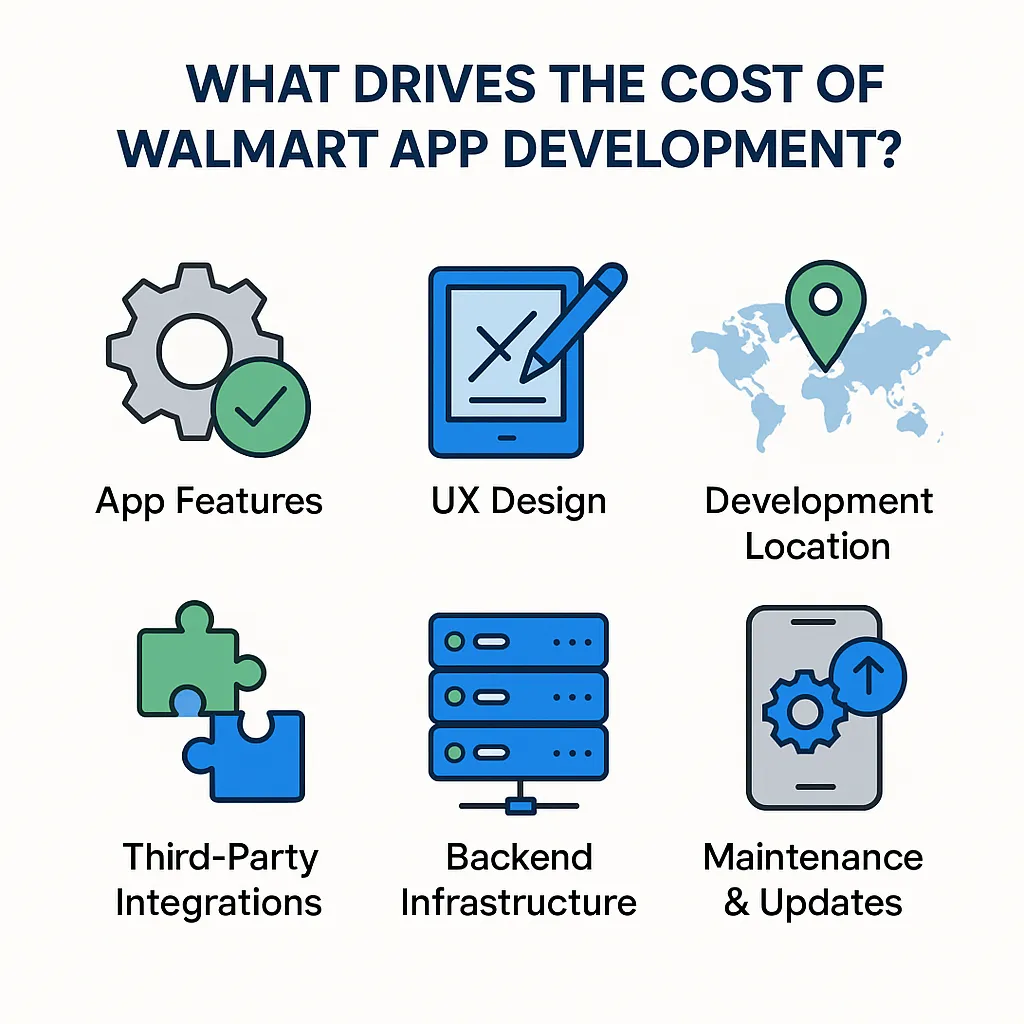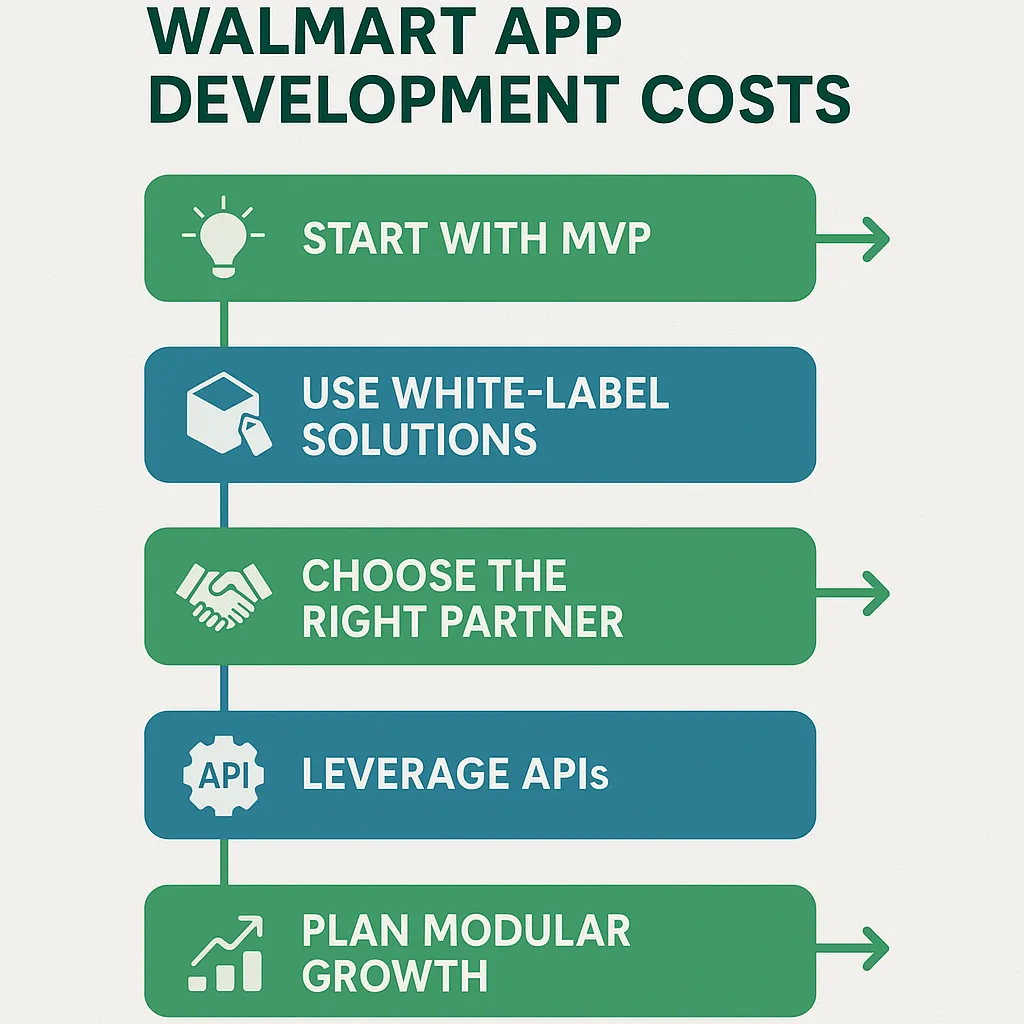Walmart App Development Cost in 2025 : Full Cost Guide
Create a powerful, customizable streaming solution with Miracuves’ Walmart, equipped with high-performance features and next-gen technology.
Looking to launch your own ecommerce platform like Walmart? Before diving into inventory systems or loyalty programs, there’s one crucial step every founder must take — understanding the cost to build the app.
A Walmart-style app isn’t just an online store. It’s a full-scale, multi-category retail engine combining inventory management, user personalization, order tracking, in-store pickup options, and more. Whether you’re planning a regional marketplace or a nationwide digital storefront, knowing the Walmart app development cost helps you budget smarter and scale faster.
In this guide, we’ll unpack the real costs behind building a Walmart-like app — from feature complexity and regional pricing to hidden costs and ways to reduce spend without compromising quality.

Key Factors That Influence Development Cost
There’s no one-size-fits-all cost when it comes to developing a Walmart-style ecommerce app. Your final budget depends on how ambitious your feature set is and the development path you choose.
Here are the biggest drivers:
App Features & Functionality → A simple online store costs far less than a multi-vendor platform with real-time inventory, smart search, and cart rules.
Design Quality & UX → High-performing retail apps require smooth navigation, intelligent filters, and mobile-first responsive design.
Third-Party Integrations → Payment gateways, tax systems, shipping APIs, CRM, inventory sync, and warehouse tools each add complexity.
Platform Support (iOS, Android, Web) → Omnichannel presence increases dev time but is essential for user reach.
Customization vs Clone Approach → White-label Walmart clones offer faster, budget-friendly launches compared to building from scratch.
Backend Scalability → For large product catalogs and high daily traffic, scalable architecture is non-negotiable.
Development Region → Hiring developers from Asia or Eastern Europe can reduce overall cost by 40–60% without sacrificing code quality.
Walmart App Development Cost by App Complexity
To give you a clearer picture, here’s a breakdown of average development costs based on app complexity.
This range includes design, development, QA testing, and basic post-launch support — but not hosting or marketing expenses.
|
App Type
|
Estimated Cost Range (USD)
|
Description
|
|---|---|---|
|
MVP (Minimum Viable Product)
|
$20,000 – $35,000
|
User registration (buyer/seller),Product listings & search,Cart & checkout,Order tracking,Payment gateway (basic),Basic admin panel
|
|
Standard Version
|
$35,000 – $80,000
|
Enhanced UI/UX, Multi-vendor support, Reviews & ratings, Wishlist & notifications, Delivery tracking, Loyalty system
|
|
Full-Featured App
|
$80,000 – $160,000+
|
Scalable microservices backend, AR product previews, AI-based recommendations, Custom shipping logic, Multi-language & multi-currency, Native iOS, Android & Web apps
|
Walmart-Style Delivery Platform Development Cost by Miracuves (2026 Pricing)
To give you a clearer picture, here’s a breakdown of average development costs based on app complexity.
This range includes design, development, QA testing, and basic post-launch support — but not hosting or marketing expenses.
|
App Type
|
Estimated Cost Range (USD)
|
Description
|
|---|---|---|
|
MVP (Minimum Viable Product)
|
$999 – $1,499
|
User registration (buyer/seller), product listing, basic search, cart & checkout, order tracking, payment gateway (basic), and a simple admin panel.
|
|
Standard Version
|
$1,500 – $2,099
|
Enhanced UI/UX, vendor dashboards, wishlist & notifications, ratings & reviews, product filters, delivery tracking, and basic analytics.
|
|
Full-Featured App
|
$2,899 (Miracuves)
|
Complete Walmart-style marketplace with multi-vendor support, real-time tracking, custom shipping logic, AI-based recommendations, loyalty systems, multi-language & multi-currency support, and scalable architecture
|
Every Walmart-style solution developed by Miracuves includes full source-code ownership, free 60-day post-launch support, and cloud deployment assistance for worry-free scalability.
Each project is delivered within 3–9 days, ensuring a rapid go-to-market launch.
Launch your Walmart-Style Marketplace App with Miracuves — built for performance, scalability, and global growth.
Average Cost Estimates by Region
Here’s a general breakdown of ecommerce app development cost by region, based on average hourly rates and project complexity:
|
Region
|
Hourly Rate (USD)
|
Typical Cost for Standard App
|
|---|---|---|
|
North America
|
$100 – $200/hr
|
$100,000 – $200,000+
|
|
Western Europe
|
$80 – $150/hr
|
$80,000 – $160,000+
|
|
Eastern Europe
|
$40 – $80/hr
|
$40,000 – $90,000+
|
|
India & Southeast Asia
|
$20 – $50/hr
|
$20,000 – $60,000+
|
Offshore teams (especially in India) offer cost-efficiency and proven ecommerce experience — making them ideal for startup-friendly development.
Cost Breakdown by Development Stage : Walmart Clone
Understanding how your budget is allocated across the development lifecycle helps prevent surprises and ensures smarter planning. Below is a typical cost distribution for Walmart-like app development:
|
Development Stage
|
Estimated % of Total Cost
|
Includes
|
|---|---|---|
|
Discovery & Planning
|
5–10%
|
Market research, competitor analysis, defining user personas, feature scoping, technical requirements.
|
|
UI/UX Design
|
10–15%
|
Wireframing, prototyping, responsive design, visual branding, user experience mapping.
|
|
Frontend & Backend Dev
|
40–50%
|
Core feature development, database architecture, APIs, payment integrations, dashboard and logic build.
|
|
Testing & QA
|
10–15%
|
Manual and automated testing, bug fixing, device/browser compatibility checks, performance tuning.
|
|
Deployment & Launch
|
5–10%
|
App store submission (Android/iOS), server setup, production deployment, performance monitoring tools.
|
|
Maintenance & Updates
|
10–20%
|
Post-launch bug fixes, new features, server maintenance, user support, compliance updates.
|

How to Reduce Walmart App Development Costs (Without Compromising Quality)
Building a Walmart-style ecommerce platform can be costly — but you can optimize your spend with the right approach:
Start with an MVP → Launch with must-have features, then scale as feedback and revenue grow
Work with a skilled clone app partner → Choose a development team that specializes in ecommerce and white-label solutions
Use open-source or white-label clones → Speeds up development while cutting initial costs
Integrate pre-built APIs → Avoid custom backend work by using proven, ready-made services
Build modularly → Start lean and add high-cost features like loyalty programs or real-time inventory in later phases
At Miracuves, we help ecommerce startups build efficiently from day one — with clone-ready frameworks and long-term growth in mind.
Choose the Right Development Partner
Even with a clear budget, the right development partner makes all the difference. A great team won’t just build your ecommerce platform — they’ll guide you through performance, scalability, and market readiness.
Here’s what to look for:
Experience in ecommerce and marketplace app development
Strong portfolio of B2C or B2B ecommerce apps
Backend expertise in inventory management, search, and promotions
End-to-end support from idea to post-launch growth
At Miracuves, we deliver tailored Walmart clone solutions that help you launch faster, grow smarter, and outperform competitors from day one.
Let us handle the development — so you can focus on growing your retail brand.
Conclusion
The cost to develop a Walmart-like app in 2026 depends on your business model, app complexity, feature set, and development location. From a $30K MVP to a $250K+ full-scale ecommerce platform, the investment can vary — but the opportunity is massive when done right.
Ready to build your own Walmart-style ecommerce solution? Need a roadmap for development? Explore our developer’s guide or hire a Walmart clone expert today. For more insights on feature planning, scaling, and clone strategies, explore our ecommerce app development series.
Frequently Asked Questions
Development costs for a Walmart-style ecommerce app can vary widely depending on features, platform scope, and backend complexity. Traditional market pricing ranges from $30,000 for an MVP to over $250,000 for a full-featured marketplace with vendor dashboards, multi-store inventory, advanced order management, and integrations. With Miracuves’ readymade solution, the complete Walmart-like app is available at just $2,899 and can be delivered in 3–9 days, enabling rapid launch without compromising quality or scalability.
Product catalog, user accounts, cart, payment integration, order tracking, and a basic admin panel.
Yes. Clone scripts and white-label frameworks reduce build time and cost — ideal for startups aiming to launch fast and scale later.
Traditional development timelines for a Walmart-style ecommerce platform can range from 3–4 months for an MVP and 6–9+ months for a full-featured solution, depending on complexity and integrations. However, with Miracuves’ ready-made Walmart clone, you can launch a fully functional platform in just 3–9 days, complete with core ecommerce modules, vendor panels, admin dashboard, and branded apps.
Miracuves specializes in scalable ecommerce clone solutions. With proven experience and cost-effective delivery, we help you go live faster and grow confidently.



